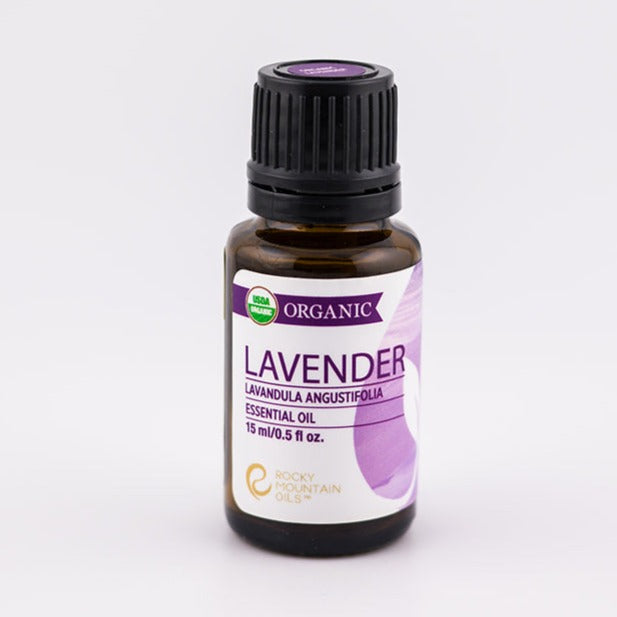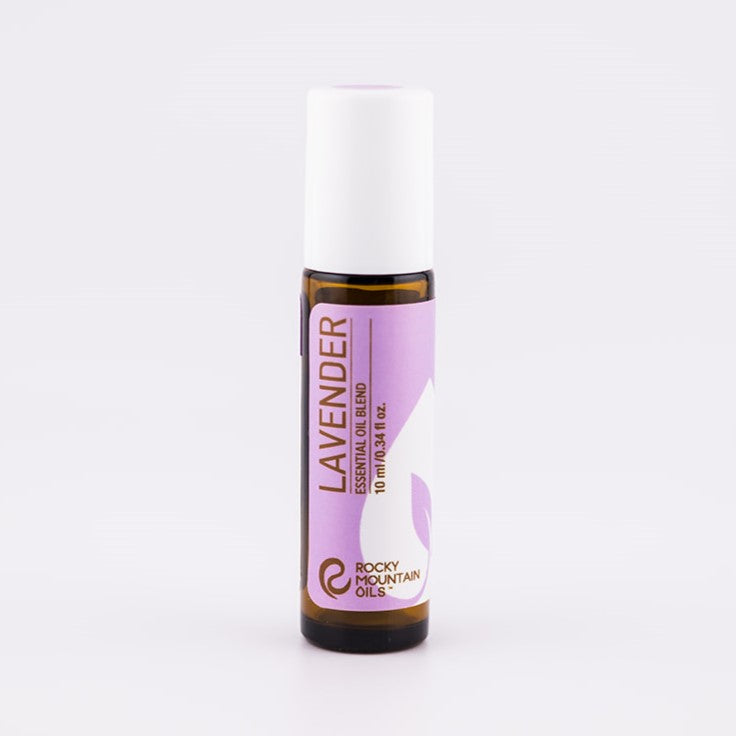Botanical Name: Lavandula Angustifolia
Places of Origin: Greece / France
Extraction Method: Steam distilled
Plant Part: Flower/Buds
Aroma: Floral, sweet, herbal
Consistency: Thin
Lavender essential oil is beneficial for its calming aroma, joint support, and overall usability around the house.

Lavender Essential Oil Benefits
Aside from its pleasing aroma, Lavender Essential Oil is great for a number of applications. They include:
Lavender Oil for Calming
Diffusing Lavender Essential Oil in the home or applying it topically offers soothing properties that help uplift the mind and mood.
Lavender Essential Oil for A Peaceful Night’s Rest
Lavender is the perfect option for getting a better night's rest. With it’s calming properties, it’s no wonder why so many manufacturers market lavender-scented bedtime products like bubble baths and lotions. Simply diffuse the oil in your bedroom, add a few drops to your evening bath, or blend it into a carrier oil or lotion and apply topically.
Lavender Oil for Skin and Hair
Incorporate Lavender Essential Oil into your skincare routine. Many people use this gentle oil to soothe the skin and help with many skin care concerns. Combine Lavender Oil with a carrier oil, and use it to nourish and hydrate both skin and hair.
Lavender Oil for the Home
Just as ancient people and English royalty found, Lavender Essential Oil is great to add to your cleaning repertoire. Use it to banish odors in your home or car. Add a few drops of Lavender Oil to a diffuser, on a cotton ball, or into a spray bottle with distilled water to freshen a closet or your sheets. Add a few drops to a washcloth, and toss it in the dryer to infuse clothing with the pleasing floral fragrance. Revitalize your gym bag or yoga mat with a Lavender Essential Oil spray. The possibilities for home use are endless.
Lavender Essential Oil by itself, or in combination with another oil like peppermint and a carrier oil, may help with migraine support. A 2012 study, published in European Neurology , found that inhaling Lavender Essential Oil brought a safe and effective sense of relief and wellbeing. Lavender Essential Oil is also incredibly useful on aching joints or overworked muscles.
Read More ↓
Lavender Oil Origin
Close your eyes and envision yourself standing in a field of calf-high plants bursting with purple blooms and the herbaceous, sweet aroma of the lavender plant.
Lavender has been around for much of human history. Ancient Romans, Greeks, Egyptians, and Indians employed the herb for its medicinal, therapeutic, and even culinary properties. When King Tut’s tomb was discovered in the early 1920s, archaeologists found lavender inside … which even retained some of its scent over all those centuries. You’ll also find references to lavender in medical textbooks and the Bible.
In Latin, “lavare” means “to wash.” And indeed, in eras of fewer baths, everyone from ancient Romans and English queens employed lavender to freshen their clothing, bedding, and bodies.

More About Lavender Essential Oil
Lavender Essential Oil (Lavandula angustifolia) is also commonly known as English Lavender, Garden Lavender, Common Lavender, True Lavender, and Narrow-Leaved Lavender. Its medium-strength floral, herbaceous, sweet, and woody aroma presents a top-middle fragrance note.
Lavender is sourced from different countries; the most common are Bulgaria and Greece. Depending on the country of origin, the aroma of the lavender plant can vary. While they are of the same variety (Lavandula angustifolia), Lavender from Greece is known to be slightly sweeter, while the Lavender from Bulgaria is more herbaceous with a slightly sharper, heavier scent. For those who are not fans of the traditional lavender scent, we encourage you to give the Lavender from Greece a try.
Both fragrances offer the same calming properties, so whichever you choose boils down to personal preference. To create Lavender Essential Oil, the most common extraction method is steam distillation. This process utilizes steam to extract oil from the lavender buds. The steam then carries that oil to a flask where the liquid and oil separate, making it easy to collect and bottle the oil.

Other Lavender Essential Oil Uses
Here are a few of our favorite ways to incorporate Lavender Essential Oil into your daily routine:
- Add Lavender Essential Oil to your massage oil
- Include it in DIY soaps and lotions
- Add to a carrier oil, and use it in the bath

Blending With Other Oils
Lavender Essential Oil complements many other oils, including:

RECIPES
Here are a few of our favorite recipes for Lavender Essential Oil.
Ice Cold Lavender Towels
- 5-10 drops Lavender
- Towel
- 3 cups of water
In a large bowl add 3 cups of water and 5-10 drops of Lavender. Dip your towel into the bowl until it is damp with the mixture, then wring out excess water. Place your towel in freezer and use it when you need instant relief from a hard workout or long day in the sun.
Soothing Soak
- 6 drops Lavender
- Mixing bowl or jar
- 2 tablespoons FCO
Mix Lavender Essential Oil and FCO together in a bowl. Pour the mixture into a warm bath . Enjoy!
Read More ↓
Is Lavender Oil Safe?
Yes. Lavender Essential Oil is generally non-irritating and non-sensitizing. For safety, use with a carrier oil for topical application. (Click here for dilution rates.) As with all our oils, keep out of the reach of children. Check with a healthcare professional if you're nursing, pregnant, or have a medical condition. Always use our oils externally.


